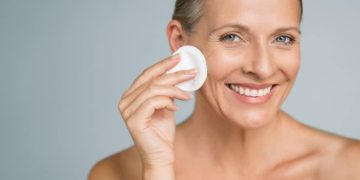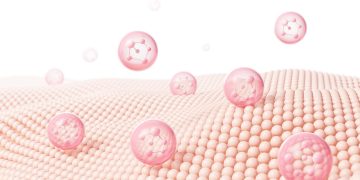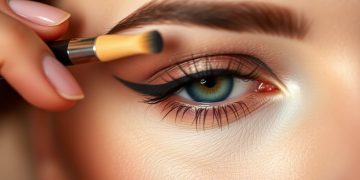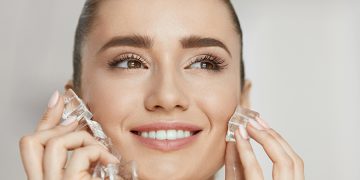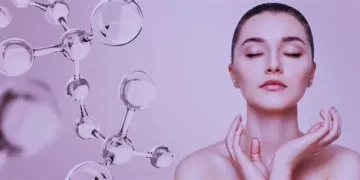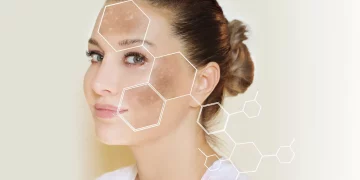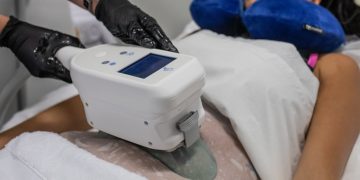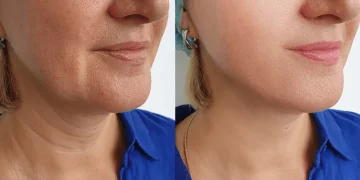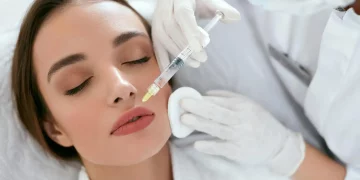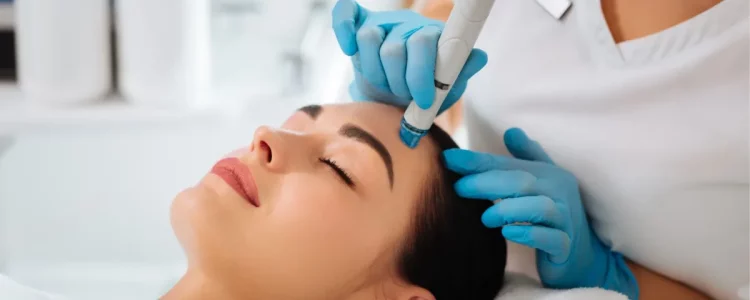Microneedling, also known as collagen induction therapy, is a popular skincare treatment that involves creating tiny, controlled punctures in the skin using a device equipped with fine needles. Despite the needles’ small size, the treatment has gained significant attention due to its ability to improve the texture, tone, and appearance of the skin. The procedure’s primary benefit is its ability to stimulate the production of collagen and elastin, essential components that maintain the skin’s firmness and elasticity. But how exactly does microneedling work, and what skin concerns can it help address?
In this article, we’ll dive deep into the science behind microneedling, its benefits, the skin conditions it can treat, and how it compares to other skin treatments.
What is Microneedling?
Microneedling is a minimally invasive procedure where a device covered in fine needles is used to create tiny punctures, or “micro-injuries,” on the skin’s surface. These controlled injuries trigger the body’s natural healing process, encouraging the production of collagen and elastin — two key proteins responsible for youthful, smooth, and plump skin. Over time, as the skin heals and regenerates, the skin’s texture improves, fine lines are reduced, and scars can appear less noticeable.
The Microneedling Process
- Preparation: The skin is cleansed, and a topical numbing cream is applied to minimize discomfort.
- Microneedling: A dermaroller or dermapen (a pen-like device with a cluster of tiny needles) is then used to puncture the skin.
- Healing: The skin begins its natural healing process, which results in the production of collagen and elastin.
- Recovery: The procedure takes about 30 minutes to 1 hour, depending on the area being treated, and recovery time is usually minimal. Redness and slight swelling may occur, but these typically subside within a few hours to a day.
How Does Microneedling Stimulate Collagen Production?
The primary mechanism behind microneedling’s effectiveness is its ability to induce controlled skin injury. This may seem counterintuitive, but in reality, it’s this process that kick-starts the skin’s natural repair system. Here’s how it works:
- Micro-Injuries Trigger Healing: The tiny needle pricks create superficial injuries in the skin, stimulating the body’s wound-healing response. When the skin heals, it works to repair itself by generating fresh collagen and elastin fibers.
- Collagen Synthesis: Collagen is a protein that acts like scaffolding for your skin, providing structure and strength. When the skin is injured, the body prioritizes collagen production to fill in the gaps and rebuild the skin’s integrity.
- Increased Skin Renewal: As collagen and elastin are produced, the skin naturally begins to renew itself, improving skin texture and tone. This results in a smoother, firmer, and more youthful appearance over time.
- Gradual Results: The full benefits of microneedling are often seen within 4 to 6 weeks after the procedure, as this is the typical amount of time the skin needs to regenerate and produce collagen.

What Skin Issues Does Microneedling Address?
Microneedling is an effective solution for various skin concerns. Below are some of the most common issues it addresses:
1. Fine Lines and Wrinkles
As we age, the skin’s natural collagen production decreases, leading to the formation of fine lines and wrinkles. Microneedling helps stimulate collagen production, which can plump the skin and reduce the appearance of fine lines, particularly around the eyes, mouth, and forehead.
2. Acne Scars
Microneedling has been shown to be highly effective in improving the appearance of acne scars, especially those caused by deep, pitted acne (also known as atrophic scars). By stimulating collagen production, the skin fills in the depressions caused by scarring, helping to restore a smoother surface.
3. Stretch Marks
Similar to acne scars, stretch marks can benefit from microneedling. The treatment can help improve the appearance of stretch marks by encouraging collagen remodeling in the affected areas, leading to smoother skin.
4. Uneven Skin Tone and Hyperpigmentation
Microneedling can help reduce the appearance of sunspots, age spots, melasma, and hyperpigmentation by promoting better skin cell turnover. The tiny micro-channels created during the procedure allow for better penetration of topical treatments, such as vitamin C serums or other brightening agents, which can further help to even out skin tone.
5. Enlarged Pores
By stimulating collagen production around the pores, microneedling helps tighten the skin and reduce the appearance of enlarged pores. Regular treatments can lead to smoother, more refined skin with a more even texture.
6. Skin Tightening
Microneedling can also be used to improve the overall firmness and elasticity of the skin. The collagen and elastin produced during the healing process can help tighten loose or sagging skin, making it a popular treatment for individuals experiencing mild skin laxity.
7. Hair Growth and Thinning Hair
Microneedling can be beneficial for individuals experiencing hair thinning or hair loss. By creating micro-injuries on the scalp, it can improve blood circulation and stimulate hair follicles. When used in combination with topical treatments like minoxidil, microneedling can enhance hair growth in areas where thinning is prominent.
Benefits of Microneedling
Microneedling offers several advantages, making it an appealing treatment for many people looking to improve their skin. Some of the key benefits include:
1. Minimal Downtime
Since microneedling is minimally invasive, the downtime is quite short. Most people experience only slight redness or swelling similar to a mild sunburn for a few hours to a day after treatment.
2. Natural Results
Unlike some more invasive procedures, microneedling provides subtle, natural-looking results. It doesn’t alter your facial expression or create an overdone effect but instead enhances your skin’s natural appearance.
3. Improvement Over Time
While results from microneedling are gradual, the improvements are long-lasting. Regular treatments can lead to cumulative improvements in skin texture, tone, and overall quality.
4. Non-Chemical Treatment
For those who prefer to avoid chemical treatments or products, microneedling is a natural alternative to more invasive or topical procedures.
What Are the Risks or Side Effects of Microneedling?
Microneedling is a generally safe procedure when performed by a trained professional, but like any treatment, it comes with some risks and side effects:
- Redness or swelling that can last for a few hours to a day.
- Bruising or mild bleeding in some cases.
- Infection risk if proper aftercare is not followed.
- Hyperpigmentation or scarring if the procedure is not done correctly, especially on darker skin tones.
- Dryness or flaking as the skin renews itself.
To minimize risks, always choose a licensed practitioner with experience in microneedling, and follow post-treatment instructions closely.
Conclusion
Microneedling is an effective and versatile treatment for a wide range of skin issues, including fine lines, wrinkles, acne scars, stretch marks, hyperpigmentation, and enlarged pores. By stimulating the skin’s natural collagen production, microneedling helps improve skin texture and tone, leaving you with a smoother, more youthful complexion. While the treatment offers numerous benefits, it’s essential to work with a qualified professional and follow the proper aftercare instructions to maximize results and minimize risks.
If you’re interested in microneedling, consult a licensed skincare professional to discuss whether it’s the right treatment for your skin concerns.



